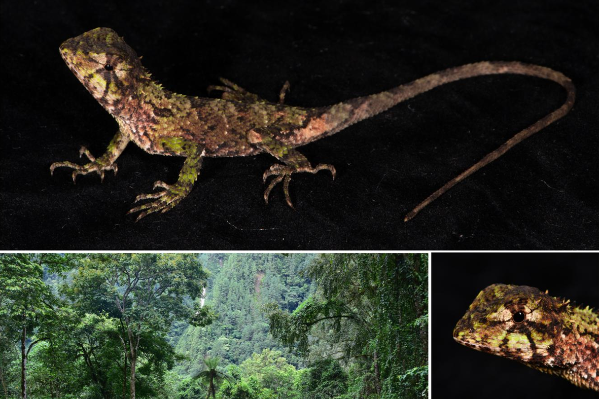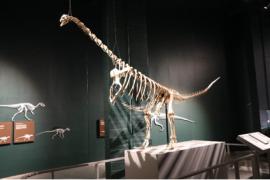See The First Jaw-Dropping Space Photos From Humanity's Biggest-Ever Camera
In a moment long-awaited by astronomers, the Vera C. Rubin Observatory in the Chilean Andes has today published its first images and time-lapse videos. A combination of a unique telescope and the largest digital camera ever built for astronomy, Rubin will begin a 10-year mission later this year, during which it's expected to discover 10 million supernovas, 20 billion galaxies, and millions of asteroids and comets. Its debut images are being shown live on YouTube today at 11:00 a.m. EDT .
This image combines 678 separate images taken by NSF-DOE Vera C. Rubin Observatory in just over ... More seven hours of observing time. Combining many images in this way clearly reveals otherwise faint or invisible details, such as the clouds of gas and dust that comprise the Trifid nebula (top right) and the Lagoon nebula, which are several thousand light-years away from Earth.
NSF-DOE Vera C. Rubin ObservatoryIts “first light” collection includes images that showcase its enormous field of view, the dense background of galaxies when zoomed in, and time-lapse videos. They include an image of the Triffid nebula and the the Lagoon nebula that combines 678 separate images in just over seven hours of observing time, as well as panoramas of the Virgo cluster.
Later in 2025, the Rubin Observatory will begin the Legacy Survey of Space and Time (LSST), which is expected to detect 90% of all potentially hazardous asteroids over 140 meters wide, as well as rogue planets, interstellar comets, and supernovae — exploding stars.
Its 8.4-meter Simonyi Survey Telescope's unique three-mirror design gives it a field of view equivalent to seven full moons. Its unmatched étendue — a measure of optical throughput — allows it to collect more wide-field light than any other telescope on Earth.
Using a rapid 39-second imaging cycle, its unique camera will produce around 800 images per night and scan the entire southern sky every three to four nights, allowing scientists to track phenomena as they occur over months, days, or even seconds.
It will create an evolving, decade-long time-lapse of the cosmos in what is known as time-domain astronomy. At about 20 terabytes every night, the amount of data gathered by Rubin Observatory in just the first year of the LSST will be greater than that collected by all other observatories combined.
The facility, named after Vera C. Rubin — the astronomer who confirmed the existence of dark matter in galaxies — aims to continue her legacy by mapping dark matter and probing dark energy. It will also supernova, help model how stars die and study the accelerating expansion of the universe.
This image shows another small section of NSF-DOE Vera C. Rubin Observatory's total view of the ... More Virgo cluster. Visible are two prominent spiral galaxies (lower right), three merging galaxies (upper right), several groups of distant galaxies, many stars in the Milky Way galaxy and more.
NSF-DOE Vera C. Rubin ObservatoryFunded by the US Department of Energy and the National Science Foundation, Rubin will observe from Cerro Pachón, an 8,900-foot (2,700-meter-high) mountain peak accessed from the Elqui Valley near La Serena, Chile, in the foothills of the Andes and in the southern Atacama Desert — one of the driest places on Earth, with the clearest sky. It's far from light pollution and major flight paths. The Southern Hemisphere also offers a clearer view of the Milky Way's center, which is dense with star fields and nebulae, as well as of the Large and Small Magellanic Clouds, two dwarf galaxies that orbit the Milky Way.
This image shows a small section of NSF-DOE Vera C. Rubin Observatory's total view of the Virgo ... More cluster. Bright stars in the Milky Way galaxy shine in the foreground, and many distant galaxies are in the background.
NSF-DOE Rubin Virgo cluster 1Its $168 million LSSTCam imager is about the size of a car, weighs over three tons and captures 3,200-megapixel images — each large enough to fill 378 4K screens. Developed over more than a decade, its suite of six optical filters enables astronomers to peer across the entire electromagnetic spectrum, from ultraviolet to near-infrared. It has a 9.6 square-degree field of view.
The telescope inside the dome of the NSF-DOE Vera C. Rubin Observatory.
NSF-DOE Vera C. Rubin Observatory/H. Stockebrand“Since we take images of the night sky so quickly and so often, we'll detect millions of changing objects literally every night,” said Professor Aaron Roodman, program lead for the LSST Camera at Rubin Observatory and Deputy Director for Rubin construction, in a press briefing. “We will also combine those images to be able to see incredibly dim galaxies and stars, including galaxies that are billions of light years away. The first images provide just a taste of Rubin's discovery power.”
Staff in the control room of the NSF-DOE Vera C. Rubin Observatory celebrate the "first photon" from ... More the sky captured by the Legacy Survey of Space and Time Camera in April 2025.
NSF-DOE Vera C. Rubin Observatory/W. O'MullaneIt's built for the era of big data and automation, with fiber optics from Cerro Pachón to La Serena enabling Rubin's images to be relayed to supercomputers in California within seconds, where AI-driven systems will compare them with previous captures. If an object’s position or brightness has changed, an alert will be issued to the global scientific community within just two minutes. During its 10-year mission, Rubin will generate up to 10 million alerts per night, identifying cosmic events faster than any telescope before.
A view of NSF-DOE Vera C. Rubin Observatory beneath the Milky Way galaxy.
NSF-DOE Vera C. Rubin Observatory/H. Stockebrand“What astronomy has given us mostly so far are just snapshots, but the sky and the world aren't static — there are asteroids zipping by and supernovas exploding,” said Dr. Yusra AlSayyad, who oversees image processing at Rubin Observatory, in a press briefing. “One of the reasons we haven't been able to convert the snapshots of the sky that we've had so far into time-lapse video is that the data management technology technologies simply did not exist 20 years ago to store transfer process and interpret the petabytes of data that this would require.” New cutting-edge automated algorithms will be used to analyze and mine the LSST data set, enabling the expected scientific discoveries.
The telescope inside the closed dome of the NSF-DOE Vera C. Rubin Observatory.
NSF-DOE Vera C. Rubin ObservatoryAmong the Rubin Observatory’s many targets, supernovas are perhaps the most scientifically tantalizing. These powerful stellar explosions serve as cosmic lighthouses, helping astronomers measure vast cosmic distances and understand the accelerating expansion of the universe. Supernova data first revealed the presence of dark energy in the 1990s. Rubin is set to take that discovery to the next level. By detecting millions of supernovas — far beyond the handful historically observed in our galaxy — the LSST will refine the timeline of cosmic expansion and offer vital clues to the nature of dark energy.
ForbesAsteroid Larger Than Golden Gate Bridge Approaches Earth In Rare Event
ForbesWhen To See June’s ‘Strawberry Moon,’ The Lowest Full Moon Since 2006By Jamie Carter
ForbesIn Photos: Strawberry Moon Skims Horizon In Once-In-A-Generation EventBy Jamie Carter








